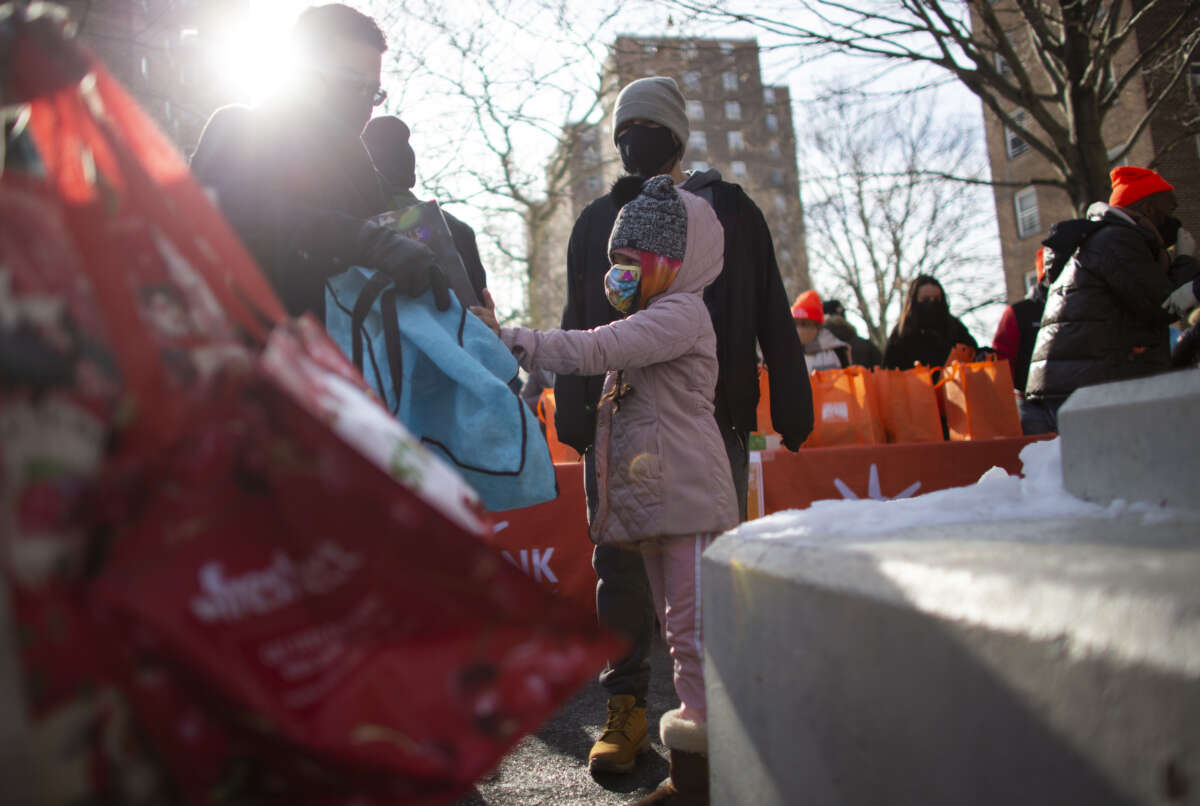New data shows that child poverty skyrocketed in 2022 after lawmakers allowed pandemic stimulus provisions to expire, leaving millions to languish even as the pandemic and its economic consequences raged on.
According to the Census Bureau’s latest report on poverty in the U.S., the supplemental poverty rate among children more than doubled between 2021 and 2022, jumping from 5.2 percent to 12.4 percent in just one year. This represents an increase of over 5 million children experiencing poverty in 2022, for a total of about 9 million children.
Poverty also increased for all ages by 4.6 percentage points to 12.4 percent in 2022. This marks the first increase in the supplemental poverty rate since 2010, and marks the largest one-year rise in poverty rates on record, according to the Census Bureau.
The agency says the increase was due to the expiration of provisions like the expanded child tax credit, which provided families with children extra money each month, the expanded Earned Income Tax Credit (EITC) and the end of the stimulus payments.
The expansions of the child tax credit and EITC both ended in 2021 after helping to keep millions of individuals and families afloat during the first two years of the pandemic. Due in large part to these provisions and the stimulus checks, the supplemental poverty rate hit an all-time low of 7.8 percent among all ages in 2021, the Census Bureau found.
Inflation also played a major role in household finances. As inflation rose 7.8 percent between 2021 and 2022, a record increase, household median income fell by 2.3 percent in real dollars, meaning that they were adjusted for inflation. This roughly matches the decrease in workers’ wages in real dollars of 2.2 percent.
The official poverty rate remained flat at 11.5 percent. The official rate is calculated differently from the supplemental rate and is considered to be outdated because it doesn’t take into account aid from some of the most significant anti-poverty programs like Social Security or basic costs like utilities or shelter.
The findings demonstrate the longtime progressive adage that poverty is a policy choice and that lawmakers can implement policies that would reduce or eliminate poverty if they chose to do so.
“The rise in the poverty rate, the largest on record in over 50 years both overall and for children, underscores the critical role that policy choices play in the level of poverty and hardship in the country,” Sharon Parrott, president of the Center on Budget and Policy Priorities (CBPP), said in a statement.
Parrott emphasized that even if Congress had only kept extending the expanded child tax credit, it could have kept 3 million children out of poverty in 2022 — or over half of the children who were plunged into poverty last year.
Democrats and progressives had fought to extend the child tax credit expansion, but were thwarted by conservative Democrats and Republicans. Sen. Joe Manchin (D-West Virginia) was a particularly outspoken opponent of the provision, fighting hard to water down the credit and ultimately killing any hope of reviving it.
Other attempts to revive the credit were rejected by Democrats and Republicans alike. When Sen. Bernie Sanders (I-Vermont) introduced an amendment to the Inflation Reduction Act to revive the expansion last August, it was rejected 97 to 1 in the Senate. Some Democrats have introduced legislation to revive the credit or make it permanent, but the bills have seen little movement in Congress. Although President Joe Biden has called for the reinstatement of the credit in his 2024 budget request, the measure is a nonstarter with the Republican-controlled House.
“Dear Senator Manchin,” Rep. Jamaal Bowman (D-New York) wrote on social media in response to the Census Bureau report, “Numbers don’t lie, man. Because YOU let the child tax credit lapse, child poverty has increased from 5.2 percent to 12.4 percent. Great job. And I mean that with sarcasm and incandescent rage.”
“70 percent of Americans support the tax credit,” Bowman continued. “How do you sleep at night?”
Join us in defending the truth before it’s too late
The future of independent journalism is uncertain, and the consequences of losing it are too grave to ignore. We have hours left to raise the $12,0000 still needed to ensure Truthout remains safe, strong, and free. Every dollar raised goes directly toward the costs of producing news you can trust.
Please give what you can — because by supporting us with a tax-deductible donation, you’re not just preserving a source of news, you’re helping to safeguard what’s left of our democracy.
